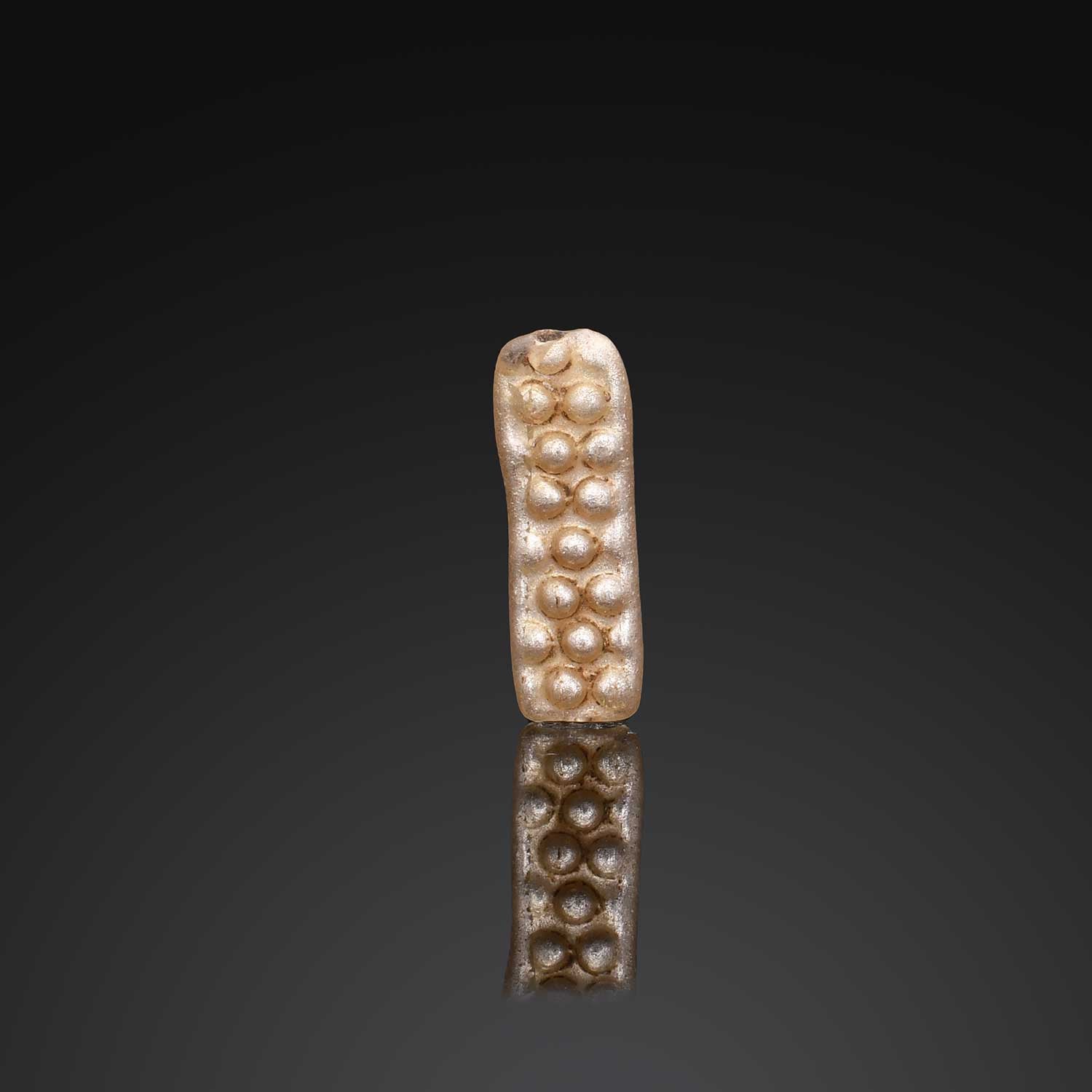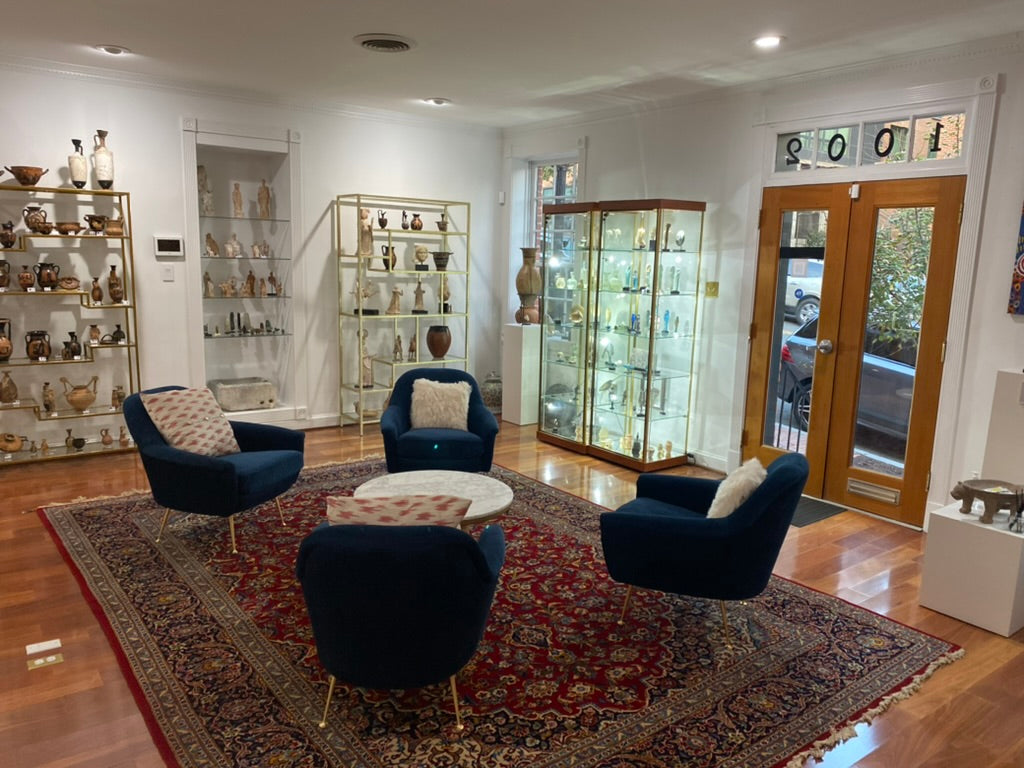


An Egyptian Electrum-Glass Bead depicting Harpokrates, Early Roman Imperial Period, ca. 50 BCE – 50 CE
This object qualifies for free USA shipping and a flat rate fee of $75 if shipping internationally.
Gold glass beads were a Hellenistic development. They were created by combining drawn tubes of colorless glass with gold or electrum foil. The earliest examples were finished bead by bead. This flat rectangular example of colorless glass, has rounded edges and corners with a hole pierced vertically through the bead. On the upper surface is Harpokrates the child in raised relief, facing front, wearing the sidelock of youth, his right arm raised holding a finger to his mouth. The underside with a pattern of raised dots in horizontal rows.
For related examples see Metropolitan Museum of Art, accession number: 17.194.509 and Spaer, M., Barag, D., Ornan, T., & Neuhaus, T. (2001), Ancient glass in the Israel Museum: Beads and Other Small Objects, Jerusalem: Israel Museum, p. 137 #234-235.
Gold-glass beads with figurative motifs are rare on the whole, but nonetheless well documented. Such beads have been found primarily in Egypt and Nubia but also in southern Russia and even Iran. There is no way of knowing if they were all manufactured in Egypt and exported, or made by similar methods (and possibly identical molds) in different locations.
Dimensions: Height: 1 1/4 inches (2.9 cm)
Condition: Weathered edge resulting in minor loss to the foiling at the top of the bead, craquelure, and fine surface sheet, intact and in excellent condition overall.
Provenance: Paul I. Ilton (1904-1958) private collection, acquired prior 1958 and then by descent to his son, Arie Ilton. Born in Germany and educated in Universities Cologne and Berlin, Ilton moved to Palestine in 1934 becoming a Palestinian citizen, conducting continuous archaeological research in Palestine, Trans-Jordan, Iraq, Syria, Hedjaz-At and assembling a personal collection that was published in 1958. With the outbreak of World War II, he entered the British Information Service in Jerusalem and served with the rank of captain until 1946 when he took up permanent residence in the United States lecturing at both New York University and Cornell University.
QUESTIONS? Just click the Contact Us tab on your right.
We ship Tuesday to Friday with FedEx and usually same day if your order is received before 2pm. Within the continental USA, packing, shipping and insurance is free. Depending on size and destination, delivery times range from one to five business days.
For overseas shipments we charge a small flat rate which includes packing, preparation of all customs paperwork, insurance and carrier fees in compliance with all USA and International customs requirements.
Overseas shipments are sent via FedEx, DHL, or UPS International Priority, so contact us if you have a shipping preference. International customers are responsible for all duties and taxes.
Sands of Time provides a lifetime, unconditional guarantee of authenticity and provenance. Every object you purchase from us is accompanied by a Certificate of Authenticity, stating culture, provenance, and age.
Furthermore, we conduct due diligence to ensure the item, to the best of our knowledge, has not been illegally obtained from an excavation, architectural monument, public institution, or private property. Wherever possible, reference is made to existing collections or publications.Wherever possible, reference is made to existing collections or publications.
Choose options






